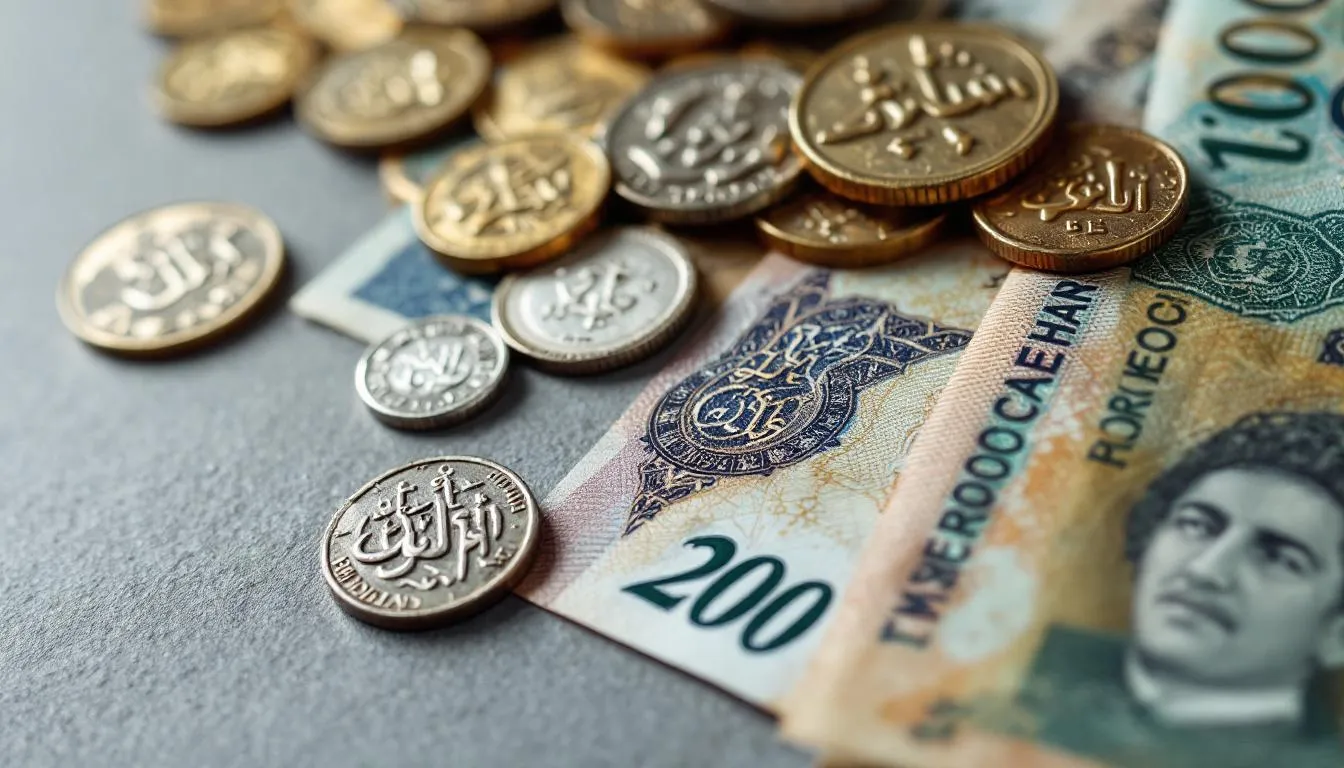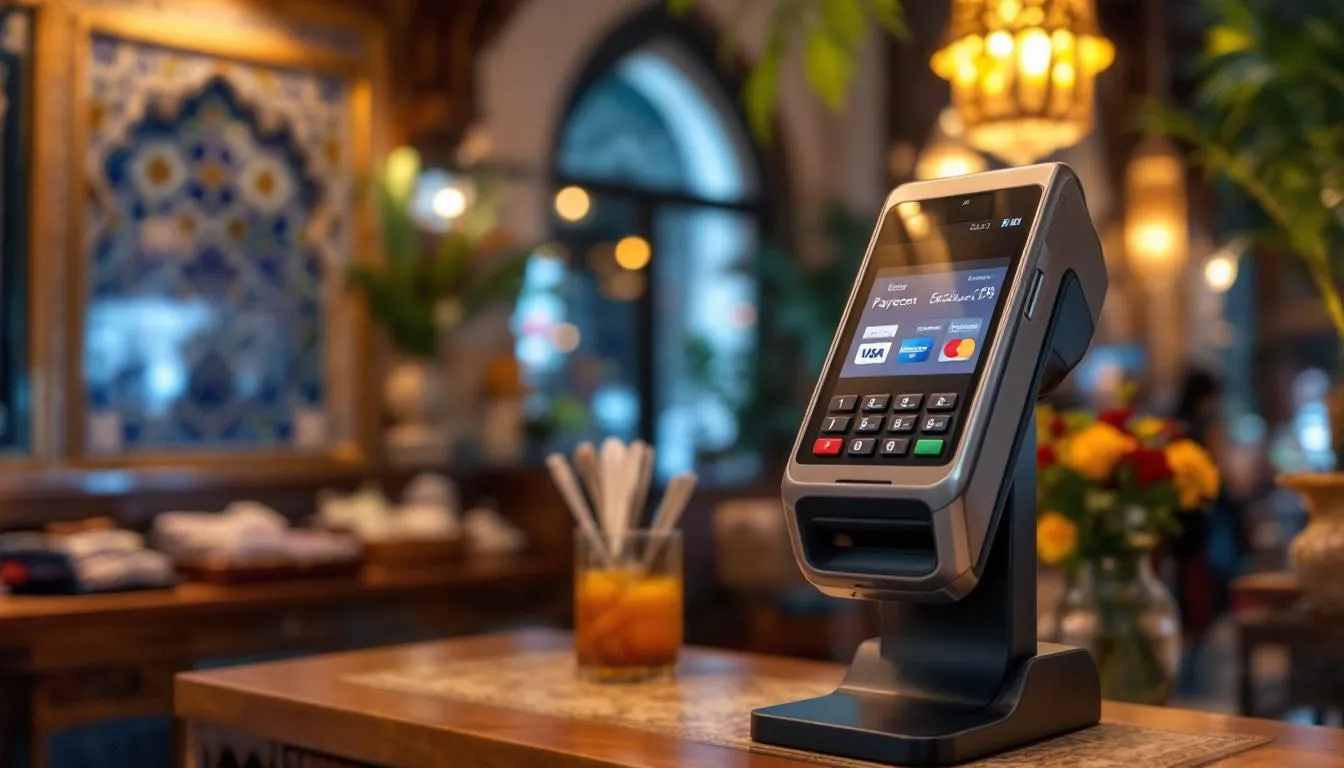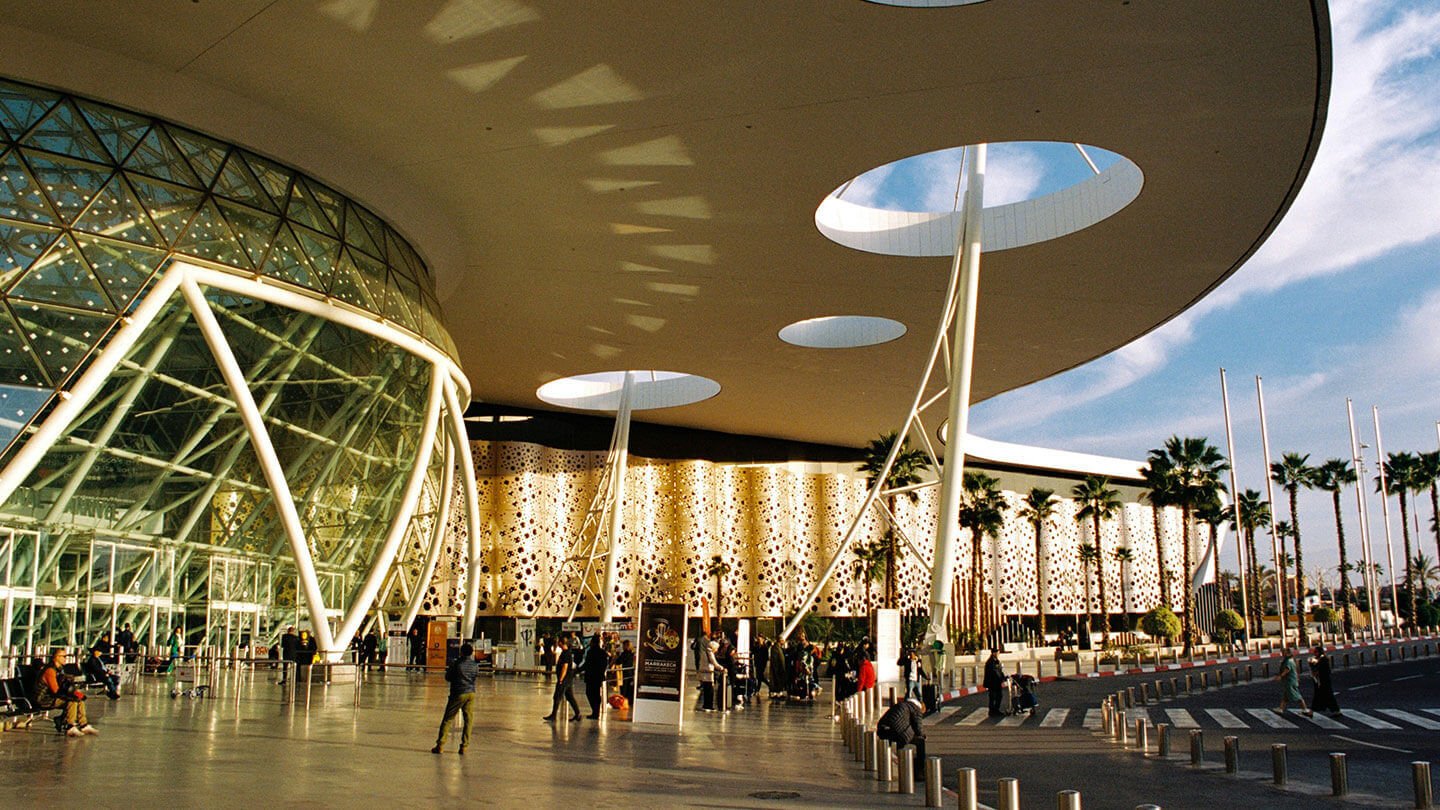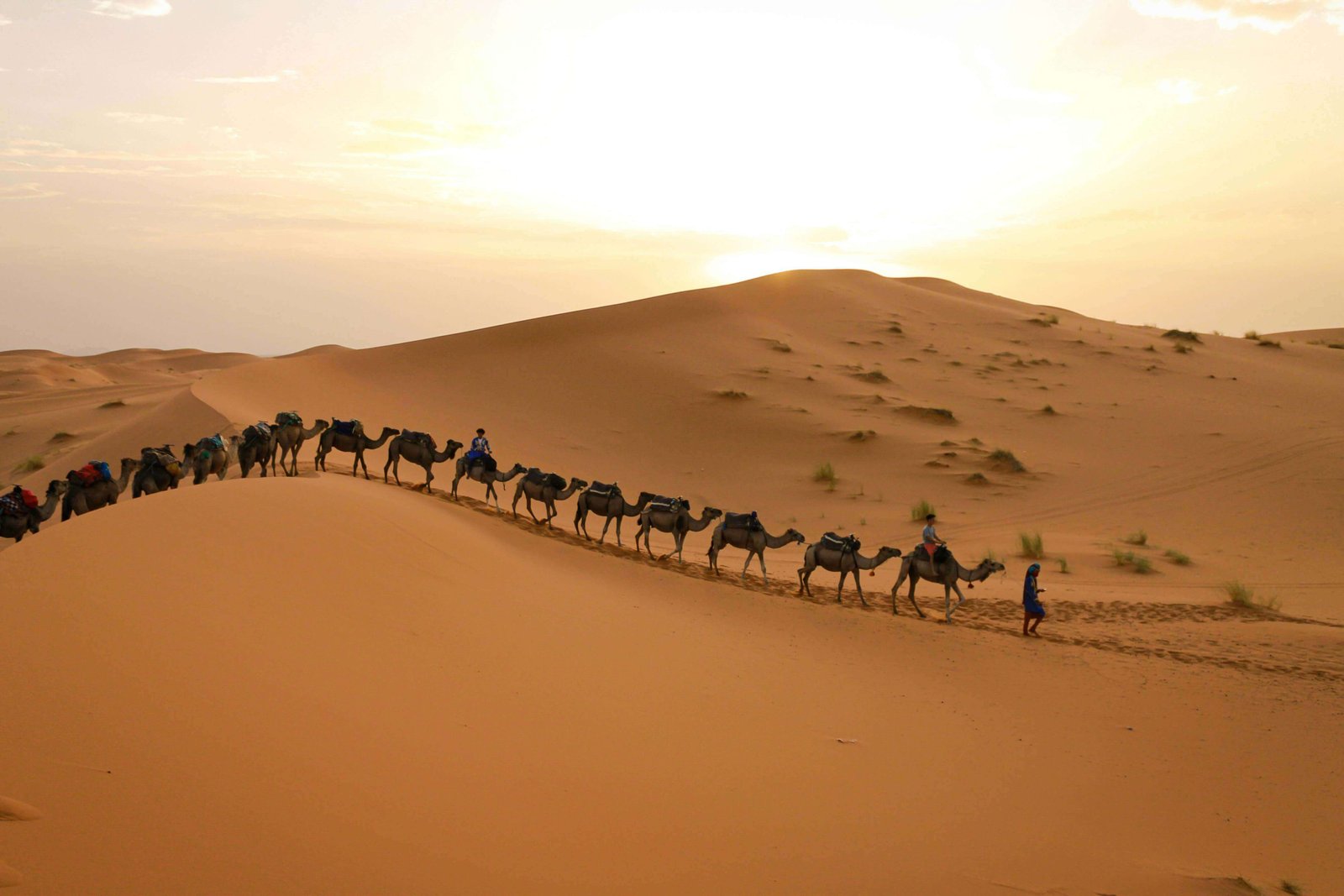Top Morocco Airports: Your Guide to Traveling Through Morocco Airport
Discover essential information on Morocco's top airports, including facilities, tips, and travel adv...
Read this article
Suspendisse interdum consectetur libero id. Fermentum leo vel orci porta non. Euismod viverra nibh cras pulvinar suspen.

Planning a trip to Morocco requires understanding the country’s unique monetary system. The money of Morocco operates under a closed currency framework that affects how travelers obtain, use, and exchange funds throughout their journey. Morocco’s official currency reflects centuries of rich history while serving modern economic needs across this North African nation. As of October 2025, 1 US dollar is roughly equal to 9.23 Moroccan Dirhams.
Understanding the Moroccan dirham and its practical applications can make the difference between a smooth and enjoyable experience and costly financial complications. This comprehensive guide covers everything from basic denominations to advanced money management strategies, ensuring you’re fully prepared for your Moroccan adventure.
The Moroccan dirham (MAD) serves as the official currency used throughout Morocco and the disputed territory of Western Sahara. This currency represents the sole legal tender for all transactions within Moroccan borders, from bustling markets in Marrakech to remote villages in the Atlas Mountains. Despite not being legal tender in Western Sahara, the dirham is the de facto currency used in the region.
Bank Al-Maghrib, Morocco’s central bank, maintains exclusive authority over issuing Moroccan banknotes and coins. Established as the monetary authority, this institution ensures currency stability and oversees the nation’s financial system. The bank’s headquarters in Rabat coordinates with regional branches to maintain consistent currency distribution across the country.
The currency code MAD derives from “Moroccan Dirham,” with the currency symbol represented as د.م. in Arabic or DH in Latin script. International financial systems recognize MAD as Morocco’s official designation for foreign exchange transactions and international trade settlements. The plural of dirham is durahim, though the singular form 'dirham' is commonly used in English and French.
Each dirham is divided into 100 smaller units called centimes, though locals often use the term “santim” in daily conversation. This subdivision system mirrors many international currencies, facilitating easy calculations for both residents and visitors. Small denominations prove essential for market transactions, taxi fares, and tipping throughout Morocco. Each dirham is divided into 100 santim, ensuring consistency in smaller transactions.
Morocco’s currency system encompasses both paper banknotes and metal coins, each designed with distinctive Moroccan cultural elements and security features. Understanding these denominations helps travelers manage money effectively and recognize authentic currency during transactions.
Modern Moroccan banknotes feature four primary denominations, each showcasing significant cultural landmarks and King Mohammed VI. These notes incorporate advanced security features to prevent counterfeiting while celebrating Morocco’s architectural heritage. Moroccan banknotes are available in denominations of 20, 50, 100, and 200 dirhams, providing flexibility for various transaction needs.
The 200 dirham note represents the largest denomination in regular circulation. This note prominently displays Hassan II Mosque, one of Morocco’s most recognizable landmarks, alongside intricate geometric patterns reflecting Islamic artistic traditions. The bill’s purple and blue color scheme makes it easily distinguishable from smaller denominations.
The 100 dirham note serves as the most commonly used large denomination for significant purchases. Featuring King Mohammed VI and Moroccan architectural elements, this green-tinted note facilitates major transactions while remaining practical for everyday use. Most hotels, restaurants, and shops readily accept this denomination. Visa and Mastercard are the most commonly accepted credit and debit cards in Morocco.
The 50 dirham note provides a mid-range option for moderate purchases. Its orange and brown coloring, combined with cultural imagery, makes identification straightforward. This denomination proves particularly useful for restaurant meals, transportation costs, and market purchases.
The 20 dirham note represents the smallest banknote denomination. Despite its lower value, this note features the same security standards as larger bills. The pink and red coloring helps distinguish it from higher denominations, making it ideal for small purchases and tips.

Morocco’s coin system spans multiple denominations, providing flexibility for small transactions and exact change requirements. These coins feature Arabic numerals and cultural symbols, making them distinct from other regional currencies. Moroccan coins are available in denominations of 1, 2, 5, 10, 20, and 50, ensuring a wide range of options for everyday use.
The 10 dirham coin represents the highest-value coin in circulation. This bi-metallic coin combines durability with a distinctive appearance, making counterfeiting difficult. Its substantial size and weight make it easily recognizable in wallets and purses.
The 5 dirham coin offers a practical mid-range option for small purchases. Like the 10 dirham piece, this coin uses bi-metallic construction for enhanced security and longevity. Many vending machines and automated services accept this denomination.
Standard coins include 2 dirham, 1 dirham, and 50 centimes pieces, each with unique sizes and designs. These coins facilitate exact change transactions and small purchases throughout Morocco. The distinctive Arabic script and Moroccan symbols make identification straightforward for travelers.
Smaller denominations include 20, 10, and 5 centime coins, though these appear less frequently in daily transactions. While useful for precise pricing, many businesses round transactions to the nearest 50 centimes for practical purposes.
The current Moroccan currency system evolved through centuries of political and economic transformation. Understanding this history provides insight into Morocco’s monetary development and the cultural significance of its modern currency. The dirham has historical origins dating back to the Byzantine Empire and is named after the Greek currency, the drachma.
The term “dirham” traces its origins to the Roman “Denarius” and Greek “drachma,” reflecting ancient Mediterranean trade connections. These linguistic roots demonstrate Morocco’s historical position as a crossroads between European, African, and Middle Eastern commerce networks.
The modern Moroccan dirham officially replaced the Moroccan franc in 1960, marking Morocco’s monetary independence following the end of the French protectorate period. This transition represented more than a currency change—it symbolized national sovereignty and economic self-determination.
During the French protectorate period from 1921 to 1960, Morocco used the Moroccan franc as its primary currency. This system linked Morocco’s economy to French monetary policy, limiting independent economic decision-making. The franc period influenced current banking practices and financial infrastructure development.
Prior to French colonization, Morocco employed various currency systems, including traditional Islamic coins and regional trading tokens. These historical currencies reflected local economic needs and trading relationships with neighboring regions and distant trading partners.
The establishment of Bank Al-Maghrib in 1959 prepared the foundation for dirham introduction. This central bank assumed responsibility for monetary policy, currency issuance, and financial system oversight, creating the institutional framework supporting modern Moroccan money management.

Morocco operates a closed currency system, making the Moroccan dirham fundamentally different from freely convertible currencies like the US dollar or euro. This system creates specific requirements and restrictions that significantly impact how travelers obtain and use Moroccan money. The Moroccan dirham is a closed currency, which means it cannot be obtained in the UK or any country outside Morocco.
The Moroccan dirham cannot be obtained outside Morocco through conventional foreign exchange services. Banks and currency exchange services in other countries typically do not stock dirhams, requiring travelers to exchange money after arriving in Morocco. This restriction necessitates careful planning for immediate expenses upon arrival. You can exchange pounds for dirhams in banks, hotels, and exchange offices in Morocco. If you have leftover dirhams, you can exchange them back to pounds at banks, hotels, and airports in Morocco.
Moroccan law prohibits taking significant amounts of dirhams out of the country when departing. Travelers can legally carry up to 2,000 dirhams across borders, but larger amounts require special permits or face confiscation. This regulation encourages complete spending or conversion of remaining funds before departure.
Foreign currency import regulations allow unlimited amounts with a proper declaration for large sums. However, keeping detailed records of exchange transactions becomes essential for converting unused dirhams back to foreign currency. Exchange receipts serve as required documentation for this reverse conversion process.
The closed currency system protects Morocco’s foreign exchange reserves and maintains monetary policy control. By restricting international dirham circulation, Bank Al-Maghrib can better manage inflation, exchange rates, and economic stability. This system provides advantages for domestic economic management while creating challenges for international travelers.
Smart travelers can still have cash left after their trip by planning expenditures carefully and monitoring remaining balances. Converting excess dirhams at authorized locations before departure ensures no financial loss from currency restrictions.
Successfully managing currency exchange requires understanding available options and their respective advantages. Morocco offers multiple legitimate exchange venues, each with distinct characteristics affecting rates, convenience, and security.
Most banks throughout Morocco provide currency exchange services with regulated rates and secure transactions. Major institutions like Attijariwafa Bank, Banque Populaire, and BMCE Bank operate branches in larger towns and cities, offering consistent service standards and competitive exchange rates. Authorized exchange offices often provide better rates for currency exchange than airports.
Authorized Bureau de Change offices provide competitive rates and convenient locations, particularly in tourist areas. These specialized exchange services often offer better rates than hotels while maintaining regulatory compliance. Many operate extended hours to accommodate travelers’ schedules and urgent exchange needs.
Most hotels offer currency exchange services for guest convenience, though rates typically favor the establishment rather than travelers. While convenient for small amounts or emergency exchanges, hotels generally provide less favorable rates than banks or dedicated exchange services. It's best to use bank and exchange office services rather than hotels for currency exchange to avoid unfavorable rates.
Airport exchange services provide immediate access to dirhams upon arrival but typically offer the worst exchange rates. These services charge premium rates for convenience and captive market positioning. Using airport exchanges for minimal amounts needed for immediate transport costs proves most economical.
Comparing rates across multiple providers before exchanging large amounts can yield significant savings. Exchange rate differences of 2-3% between providers can substantially impact travel budgets, making rate shopping worthwhile for substantial currency conversions.
The Moroccan dirham operates under a managed float system pegged to a currency basket comprising 60% euro and 40% US dollar. This mechanism provides stability against major international currencies while allowing controlled flexibility for economic adjustments. Exchange rates for major currencies like USD and EUR are typically managed to stay within a narrow band of fluctuation. As of October 2025, 1 Euro is roughly equal to 10.72 Moroccan Dirhams.
Current exchange rates fluctuate within managed bands, providing predictability for travelers while reflecting international market conditions. Checking rates on platforms like XE, OANDA, or Google Finance before travel helps establish baseline expectations for exchange costs.
The mid-market rate represents the actual exchange rate between currencies without provider markups. Understanding this baseline helps evaluate whether exchange providers offer fair rates or excessive spreads that increase conversion costs.
Economic conditions and international demand influence rate fluctuations within the managed system. Political stability, tourism levels, and commodity prices all impact the dirham’s relative strength against major international currencies.
Monitoring exchange rates during trip planning allows travelers to time large exchanges for optimal value. While daily fluctuations remain modest due to the pegged system, weekly or monthly trends can affect overall trip costs.
Modern payment infrastructure in Morocco accommodates international cards while maintaining cash preference in many sectors. Understanding card acceptance patterns and ATM availability helps travelers balance convenience with practical limitations.
Visa and Mastercard enjoy wide acceptance throughout tourist areas, major cities, and modern establishments. Hotels, upscale restaurants, and shopping centers routinely process these cards, providing convenient payment options for significant expenses. Payments by card may incur surcharges of up to 5% in Morocco.
American Express and Diners Club face more limited acceptance, particularly outside major tourist zones. While some luxury establishments accept these cards, travelers should not rely on them as primary payment methods throughout Morocco.
Most hotels, especially in major cities and tourist areas, accept international credit and debit cards for room charges and additional services. This acceptance extends to car rental agencies, tour operators, and established restaurants catering to international visitors.
Rural areas and smaller shops demonstrate strong preferences for cash payments. Traditional markets, local restaurants, and small vendors typically operate cash-only systems, making dirham availability essential for authentic Moroccan experiences. Smaller establishments in Morocco may not accept credit cards, making cash essential. While cash is essential for small towns and markets, credit and debit cards are widely accepted in cities and tourist areas.
Always carrying cash backup prevents payment difficulties in establishments with limited card infrastructure. ATM networks provide cash access, but having reserve funds ensures transaction capability during card system outages or technical difficulties.

ATMs appear throughout Morocco at banks, airports, hotels, and tourist spots, providing convenient cash access for international visitors. Bank-affiliated ATMs generally offer better security and more reliable service than independent machines. It's advisable to use ATMs located in safe, well-lit areas to ensure security during withdrawals. ATMs are widely available in Morocco, providing a convenient way to withdraw dirhams throughout cities and towns.
Typical withdrawal limits range around 2,000 dirhams per transaction, though limits vary by bank and account type. Multiple withdrawals may be necessary for large cash requirements, though this increases fee exposure for travelers paying per-transaction charges.
Using bank-affiliated ATMs rather than independent machines provides better security and more reliable service. Major bank networks maintain their ATM fleets more consistently and offer better customer support for transaction problems. Using ATMs affiliated with major banks is recommended to avoid high withdrawal fees.
Avoiding ATMs in highly touristy areas can reduce foreign transaction fees that some providers charge premium rates in high-traffic locations. ATMs near banks or in business districts often provide more favorable fee structures.
Checking with your home bank about international withdrawal fees helps budget for cash access costs. Many banks charge both foreign transaction fees and ATM usage fees, making multiple small withdrawals expensive compared to fewer large ones.
Effective money management enhances travel experiences while preventing financial complications. Understanding local practices and security considerations helps travelers navigate Morocco’s cash-centric economy successfully.
Carrying small denominations facilitates transactions in markets, with taxi drivers, and at small vendors. Breaking large bills at hotels or major retailers ensures adequate change availability for subsequent small purchases throughout the day.
Avoiding displays of large cash amounts reduces theft risk and unwanted attention from aggressive vendors. Discreet money management maintains personal security while preventing inflated pricing based on perceived wealth. Keep your cash, cards, and important documents secure in a money belt or travel wallet while in Morocco.
Keeping money secure across multiple locations distributes risk effectively. Using hotel safes for large amounts, wearing money belts for daily funds, and maintaining emergency reserves in luggage provides comprehensive security coverage.
Counting change carefully ensures transaction accuracy and prevents short-changing. Language barriers and number system differences can create confusion, making deliberate change verification essential for all cash transactions.
Having exact change ready for taxis and small vendors speeds transactions and reduces disputes. Many service providers lack change for large bills, making small-denomination availability crucial for smooth interactions.
Haggling represents expected behavior in souks, markets, and for various tour services. Understanding this cultural practice helps travelers achieve fair prices while respecting local commercial traditions and supporting authentic cultural exchange. When paying in Moroccan markets, always have a smile on your face as it is important to keep the negotiation friendly. Haggling over prices is common practice in Moroccan markets and for some services.
Fixed pricing systems operate in restaurants, supermarkets, and modern retail stores. These establishments clearly display prices and expect standard payment without negotiation, similar to Western commercial practices.
Starting negotiations at roughly half the asking price provides a reasonable bargaining foundation. This approach respects vendor expectations while ensuring reasonable final prices that benefit both parties in the transaction.
Maintaining friendly, respectful attitudes during bargaining creates positive interactions and often yields better final prices. Aggressive or dismissive behavior typically results in higher prices and unpleasant experiences for all involved.
Finalizing deals with handshakes once prices are agreed prevents later disputes and demonstrates mutual respect. This traditional closure method ensures both parties understand and accept the negotiated terms.
Effective budgeting requires understanding typical costs across major expense categories. Morocco offers options for various budget levels, from backpacker-friendly to luxury experiences, each with distinct cost structures and value propositions.
Budget hostels and guesthouses typically charge $40-70 per night for basic accommodations with shared facilities. These options provide essential amenities while keeping spending money available for experiences and activities throughout your trip to morocco.
Mid-range riads and hotels cost $100-250 per night, offering enhanced comfort and authentic Moroccan architecture. For travelers headed to Essaouira's best hotels, these properties balance cost with experience, providing cultural immersion while maintaining modern conveniences for international travelers.
Luxury hotels and resorts command $400+ per night, delivering premium services and amenities. These establishments cater to travelers seeking high-end experiences with comprehensive services, spa facilities, and prime locations.
Accommodation prices vary significantly by location and season. Marrakech and major cities typically cost more than rural areas, while peak tourist seasons command premium pricing across all categories.
Street food and local eateries provide meals for $3-8, offering authentic Moroccan cuisine at budget-friendly prices. These venues deliver genuine cultural experiences while maintaining low daily food costs for budget-conscious travelers.
Mid-range restaurants charge $15-30 per person for quality meals with broader menu selections and enhanced service. These establishments balance authenticity with comfort, providing reliable dining experiences in tourist areas and major cities.
Fine dining establishments cost $50+ per person, delivering premium cuisine and upscale dining experiences. These restaurants often feature international cuisine alongside high-end Moroccan specialties in sophisticated settings.
Tipping 10-15% is appreciated for good service across all dining categories. This practice recognizes quality service while aligning with local customs and supporting hospitality workers throughout the tourism industry. Tips are not mandatory in Morocco, but a tip is always appreciated if you are happy with the service. Tipping in Morocco is customary, generally ranging from 10-15% in restaurants.
Local transportation within cities typically costs $5-10 for taxi rides or bus tickets. These services provide essential mobility for sightseeing and daily activities while maintaining a reasonable budget impact for most travelers.
Long-distance buses and trains charge $40-70 for inter-city travel, offering economical transportation between major destinations. These services provide comfortable travel options while maintaining budget control for extended itineraries.
Car rental services cost $90-140 per day, including insurance and basic coverage. This option provides maximum flexibility for exploring rural areas and visiting remote attractions at your own pace.
Popular attraction entrance fees range from $10-75, depending on site significance and included services. Major attractions like palaces and museums typically charge higher fees while smaller sites remain more affordable.
Desert tours and guided experiences cost $100-300, depending on duration and included services. These specialized activities provide unique Moroccan experiences while requiring larger budget allocations for memorable adventures.
Morocco’s banking sector provides comprehensive financial services through major institutions serving both residents and international visitors. Understanding available services helps travelers access needed banking support during extended stays or business visits.
Banque Populaire, Attijariwafa Bank, and BMCE Bank represent major institutions with extensive branch networks throughout Morocco. These banks offer currency exchange, money transfers, and various account services for both individuals and businesses.
Banking hours typically extend from 8:30 AM to 4:30 PM Monday through Friday, with limited weekend services in major cities and tourist areas. Some branches offer extended hours during peak tourist seasons to accommodate visitor needs.
International banking partnerships facilitate easier ATM access and reduced fees for travelers with accounts at partner institutions. Many Moroccan banks maintain relationships with international networks, providing cost-effective services for foreign visitors.
Branch locations concentrate in major cities, tourist areas, and business districts, with more limited rural coverage. Travelers visiting remote areas should plan cash needs accordingly and use banking services in larger towns before departing for rural destinations.
Currency exchange services at banks typically offer competitive rates with proper documentation. Bringing passport identification and maintaining exchange receipts facilitates smooth transactions and future currency conversion needs.
Digital payment adoption continues growing in urban Morocco, though cash remains dominant across most sectors. Understanding available options helps travelers utilize convenient payment methods while recognizing current limitations.
Mobile payments gain traction in major cities through services that accept international cards and digital wallets. Apple Pay, Google Wallet, and PayPal see increasing acceptance at modern retailers and restaurants catering to international customers.
Local solutions like Wafacash and Barid Cash facilitate money transfers and bill payments for residents. While primarily designed for local users, these services demonstrate Morocco’s growing digital financial infrastructure and technological adoption.
Digital wallets prove useful for urban shopping and dining in establishments with modern payment infrastructure. However, these services remain limited outside major cities where cash transactions continue dominating commercial activities.
Tourist areas show higher digital payment acceptance rates compared to traditional neighborhoods and rural regions. Visitors should expect varied payment options depending on location and establishment type throughout their Moroccan journey.
Cash remains essential for authentic cultural experiences, including traditional markets, local transportation, and small vendor interactions. The currency in morocco continues serving as the primary transaction medium for most daily activities.
Understanding tax structures and additional fees helps travelers budget accurately and avoid unexpected charges. Morocco’s tax system includes various rates and applications affecting different goods and services throughout the country.
Standard VAT rates of 20% apply to most goods and services, though this tax is typically included in displayed prices. Travelers should clarify whether quoted prices include taxes, particularly for larger purchases or specialized services.
Reduced VAT rates apply to essential items like food and medical supplies, helping control costs for basic necessities. These reduced rates benefit both residents and travelers purchasing everyday items during extended stays.
Airport taxes are typically included in airline ticket prices, eliminating surprise charges during departure. However, travelers should verify tax inclusion when booking flights to avoid unexpected fees at the airport.
Some hotels and restaurants add 10% service charges to bills, particularly in tourist areas and upscale establishments. Checking bills carefully prevents double-tipping while ensuring proper service charge recognition and payment.
Hotel staff, tour guides, and restaurant servers typically receive tips beyond any service charges. Understanding local tipping customs helps travelers budget appropriately while supporting service industry workers throughout Morocco.
Understanding the money of morocco requires appreciating both its rich historical development and modern practical applications. The Moroccan dirham serves as more than currency—it represents Morocco’s sovereignty and cultural identity while facilitating daily commerce across this diverse nation.
Successful money management in Morocco combines preparation with flexibility. Understanding the closed currency system, exchange options, and payment preferences enables travelers to navigate financial aspects confidently while focusing on cultural experiences and exploration.
Whether exploring the bustling markets of Marrakech, trekking in the Atlas Mountains, or relaxing in coastal cities, proper currency knowledge ensures a smooth and enjoyable experience throughout your Moroccan adventure. Plan ahead, understand local customs, and embrace the unique monetary system that reflects Morocco’s distinctive character and rich heritage.

Discover essential information on Morocco's top airports, including facilities, tips, and travel adv...
Read this article
Discover the top tours and day excursions in Marrakech, Morocco. Explore vibrant markets, stunning l...
Read this article
Discover the top Morocco tour agency for personalized travel experiences. Find the perfect fit for y...
Read this articleWant cool tour deals and tips about Morocco? Enter your email and we’ll send them to you each month!